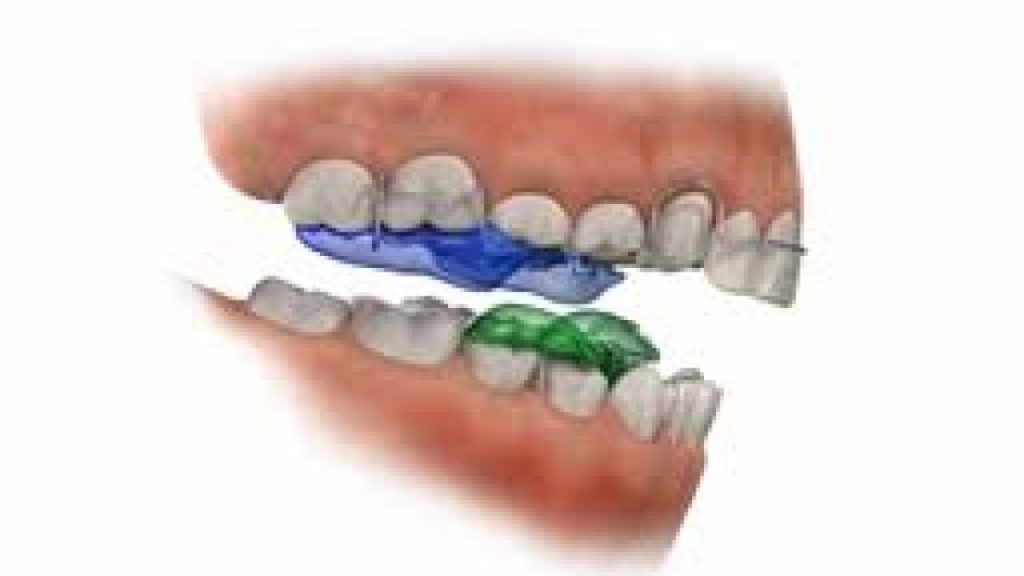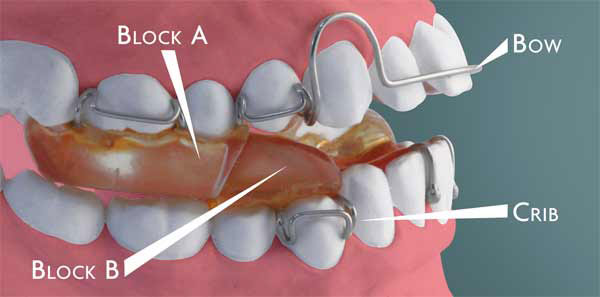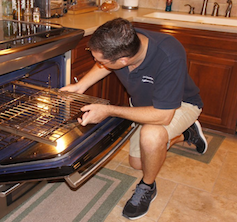Contents
- What is a Twin Block Appliance?
- How Does a Twin Block Appliance Work?
- Benefits of Using a Twin Block Appliance
- Conditions that Can Be Treated with a Twin Block Appliance
- Procedure for Fitting a Twin Block Appliance
- Tips for Wearing and Maintaining a Twin Block Appliance
- Potential Side Effects and Risks of Using a Twin Block Appliance
- Comparing Twin Block Appliances to Other Orthodontic Treatments
- Frequently Asked Questions about Twin Block Appliances
- Conclusion
So you’ve heard about the Twin Block Appliance and you’re curious to know more? Look no further, because in this article, we’ll take you through everything you need to know about this innovative dental appliance. From its design to its benefits, we’ll explore how the Twin Block Appliance can help to correct jaw misalignments and improve your overall oral health. Get ready to discover a game-changing solution that could transform your smile!
What is a Twin Block Appliance?
Definition
A Twin Block Appliance is a type of orthodontic appliance that is used to correct misaligned jaws and improve bite issues. It consists of two removable plates, one for the upper jaw and one for the lower jaw, that work together to guide the jaw into a more aligned position.
Purpose
The main purpose of a Twin Block Appliance is to correct overbite or underbite issues by gradually repositioning the jaws into a more ideal alignment. By encouraging proper growth and development of the jaws, this appliance can help improve overall facial profile and enhance the function of the bite.
Design
Twin Block Appliances are typically made from a combination of acrylic and stainless steel wires. The upper and lower plates are custom-made to fit snugly over the teeth, and the stainless steel wires connect the plates and provide the necessary forces to guide the jaw into the desired position. The design is sleek and discreet, making it a popular choice among patients of all ages.
How Does a Twin Block Appliance Work?
Mechanism
The Twin Block Appliance works by using a two-phase approach to gradually align the jaws. The upper and lower plates of the appliance are designed in a way that when the patient bites down, the lower jaw is encouraged to move forward into a more ideal position. This repositioning of the lower jaw helps correct bite issues and improves the alignment of the upper and lower teeth.
Components
A typical Twin Block Appliance consists of two main components – the upper plate and the lower plate. The upper plate typically covers the roof of the mouth and has an inclined plane that encourages the lower jaw to move forward. The lower plate fits over the lower teeth and has an angled surface that allows for proper alignment with the upper plate. Stainless steel wires connect the two plates and provide the necessary forces to guide the jaw into the desired position.
Function
When the patient bites down, the inclined plane on the upper plate pushes the lower jaw forward. This forward movement of the lower jaw helps stimulate the growth of the jaw tissues and gradually aligns the jaws into a more ideal position. The stainless steel wires provide the necessary forces to guide the jaw movement and ensure proper alignment of the upper and lower teeth.
Benefits of Using a Twin Block Appliance
Improves Jaw Alignment
One of the key benefits of using a Twin Block Appliance is its ability to improve jaw alignment. By guiding the lower jaw into a forward position, this appliance helps correct overbites and underbites, resulting in a more harmonious and balanced facial profile.
Enhances Facial Profile
Another significant benefit of using a Twin Block Appliance is that it can enhance the overall facial profile. By promoting proper jaw growth and alignment, this appliance helps improve the balance and symmetry of the face, giving it a more aesthetically pleasing appearance.
Corrects Bite Issues
Twin Block Appliances are highly effective in correcting various bite issues, such as overbites, underbites, and crossbites. By gradually repositioning the jaws, these appliances help align the upper and lower teeth, improving the functionality of the bite and reducing the risk of dental problems.
Conditions that Can Be Treated with a Twin Block Appliance
Underbite
An underbite is a condition where the lower jaw protrudes forward, causing the lower teeth to overlap the upper teeth when the patient bites down. A Twin Block Appliance can be used to treat underbites by guiding the lower jaw into a more retracted position, aligning the upper and lower teeth and improving the bite.
Open Bite
In an open bite, there is a gap between the upper and lower teeth when the patient bites down. This condition can affect speech, eating, and overall oral function. A Twin Block Appliance can help correct open bites by promoting proper jaw alignment and closing the gap between the upper and lower teeth.
Crossbite
A crossbite occurs when the upper teeth are positioned inside the lower teeth when the patient bites down. This misalignment can lead to jaw discomfort, difficulty chewing, and uneven wear on the teeth. Twin Block Appliances can be used to correct crossbites by guiding the jaws into a more aligned position, ensuring that the upper teeth fit properly over the lower teeth.
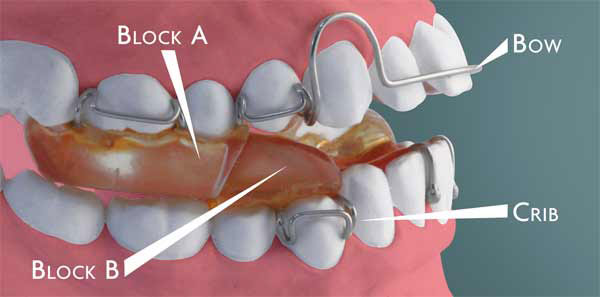
Procedure for Fitting a Twin Block Appliance
Consultation and Examination
The first step in fitting a Twin Block Appliance is to consult with an orthodontist. During this consultation, the orthodontist will examine your teeth and jaws, take X-rays or scans, and discuss your treatment goals. This is an opportunity to ask questions and address any concerns you may have.
Impressions and Models
Once you have decided to proceed with the Twin Block Appliance, the orthodontist will take impressions of your teeth. These impressions will be used to create custom-made upper and lower plates for your appliance. In some cases, digital scans may be used instead of traditional impressions.
Adjustments and Monitoring
After the Twin Block Appliance has been fitted, your orthodontist will make any necessary adjustments to ensure a comfortable fit. You will be provided with instructions on how to wear and care for the appliance. Regular check-ups will be scheduled to monitor your progress and make any additional adjustments as needed.
Tips for Wearing and Maintaining a Twin Block Appliance
Proper Wear and Duration
To ensure effective treatment, it is important to wear the Twin Block Appliance as instructed by your orthodontist. Typically, the appliance should be worn full-time, including during sleep. It is recommended to wear the appliance for at least 16-18 hours a day. Consistency is key in achieving the desired results within the estimated treatment duration.
Cleaning and Hygiene
Keeping your Twin Block Appliance clean is essential for maintaining good oral hygiene and preventing the buildup of bacteria or plaque. It is recommended to clean the appliance thoroughly after each use using a soft toothbrush and mild soap or non-alcoholic mouthwash. Avoid using hot water, harsh cleaners, or toothpaste, as they can damage the appliance.
Regular Check-ups
Regular visits to your orthodontist are important throughout the treatment with a Twin Block Appliance. These check-ups allow your orthodontist to monitor your progress, make any necessary adjustments, and ensure that the appliance is functioning properly. It is essential to attend these appointments as scheduled to ensure the best outcome from your treatment.
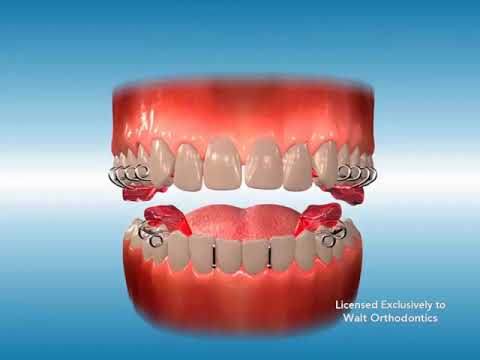
Potential Side Effects and Risks of Using a Twin Block Appliance
Temporary Discomfort
It is common to experience some temporary discomfort or soreness in the jaw, teeth, or facial muscles when first wearing a Twin Block Appliance. This discomfort usually subsides within a few days as the mouth adjusts to the appliance. Over-the-counter pain relievers or the application of a warm compress can help alleviate any discomfort.
Speech Impediments
Initially, wearing a Twin Block Appliance may affect speech, causing a slight lisp or difficulty pronouncing certain sounds. However, with practice and persistence, most patients adapt to wearing the appliance within a short period of time. Regular practice and attending speech therapy sessions, if recommended by your orthodontist, can help improve speech while wearing the appliance.
Allergic Reactions
In rare cases, individuals may have an allergic reaction to the materials used in the Twin Block Appliance. If you experience any unusual symptoms such as itching, redness, or swelling, it is important to contact your orthodontist immediately. They will evaluate the situation and recommend appropriate measures to address any allergic reactions.
Comparing Twin Block Appliances to Other Orthodontic Treatments
Fixed Braces
Twin Block Appliances and fixed braces are both effective orthodontic treatments for correcting misaligned teeth and jaws. However, there are some notable differences between the two. While fixed braces use brackets and wires that are permanently attached to the teeth, Twin Block Appliances are removable and must be taken out for eating and cleaning. The choice between these treatments depends on the severity of the case, individual needs, and personal preference.
Removable Appliances
Twin Block Appliances are classified as removable appliances, meaning they can be taken out for eating, cleaning, and certain activities. This offers convenience and flexibility to the patients. On the other hand, there are also fixed removable appliances, such as Herbst appliances, which are attached to the teeth with bands or brackets. These fixed removable appliances require less compliance from the patient compared to Twin Block Appliances.
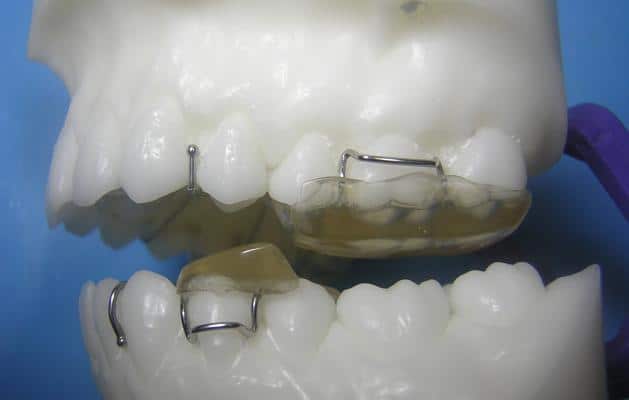
Frequently Asked Questions about Twin Block Appliances
How long does treatment with a Twin Block Appliance take?
The duration of treatment with a Twin Block Appliance can vary depending on the individual case and the severity of the jaw misalignment. On average, treatment can range from 9 to 18 months, but it may take longer in more complex cases. Your orthodontist will be able to provide a more accurate estimate of the treatment duration after evaluating your specific situation.
Can I still eat normally with a Twin Block Appliance?
While wearing a Twin Block Appliance, it is important to make adjustments to your eating habits. Avoid hard, sticky, or chewy foods that can damage the appliance. Cut food into smaller pieces and chew carefully to prevent any breakages. It is also recommended to remove the appliance during meals to avoid food particles getting trapped.
Is the Twin Block Appliance suitable for adults?
Yes, the Twin Block Appliance can be an effective treatment option for adults as well as children and teenagers. It is never too late to correct jaw misalignment and improve your oral health. However, the success of the treatment may depend on the individual case, and your orthodontist will determine the suitability of the appliance for your specific needs.
Conclusion
The Twin Block Appliance is a versatile and effective orthodontic treatment option for correcting jaw misalignment and improving bite issues. By promoting proper jaw growth and alignment, it can enhance the facial profile, correct dental problems, and improve oral function. With proper care and regular check-ups, the Twin Block Appliance can help you achieve a more aligned and harmonious smile. Consult with an experienced orthodontist to explore if the Twin Block Appliance is the right treatment option for you.
